Hannah Arendt: What you need to know about the German philosopher's life and work
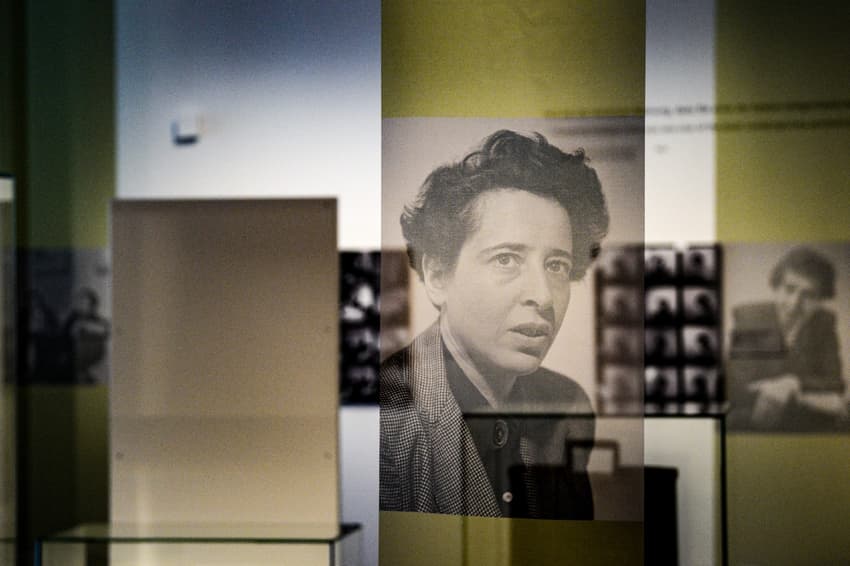
Hannah Arendt is widely regarded as one of the most influential political philosophers of the 20th century. As an exhibition in Berlin pays tribute to her life and work, we delved into her past.
Hannah Arendt lived an extraordinary life. Forced to flee Germany as a young Jewish woman in World War II, her experiences of exile and life under the Nazi regime led her to pen works which have long shaped political theory and philosophy.
We take a brief look at her life and introduce the Berlin exhibition shining a light on her remarkable influence on the 20th century.
In the beginning
Arendt was born in Hanover in 1906 as the only child to secular German-Jewish parents. She spent her childhood between Königsberg in East Prussia and Berlin. Her father died from syphilis when she was just seven years old.
At the University of Marburg in Hesse, Arendt studied philosophy under Martin Heidegger, with whom she began a brief affair. In 1929, she completed her PhD at the University of Heidelberg, writing her dissertation on the concept of love in St. Augustinian thought, under the supervision of Karl Jaspers.
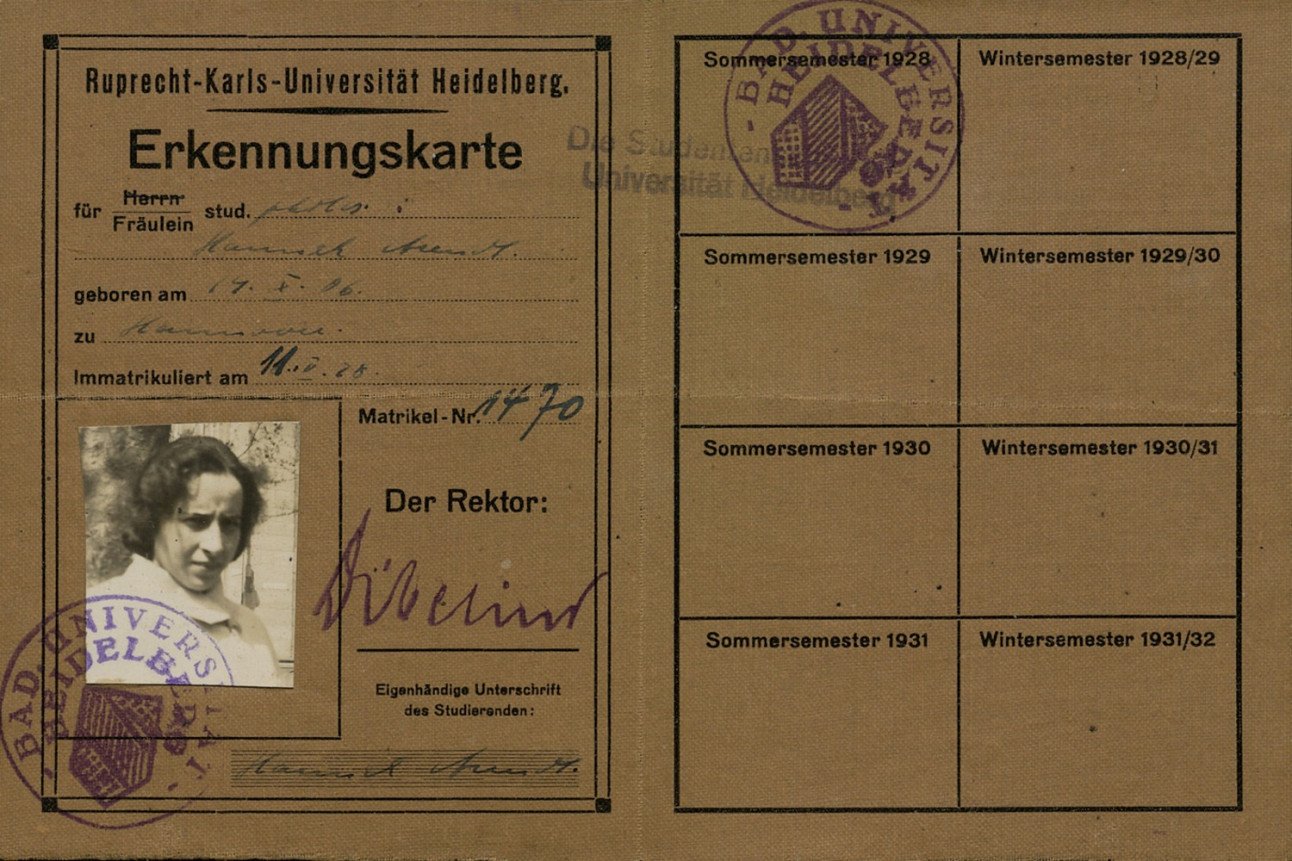
Hannah Arendt's student ID card, issued by the Ruprecht Karl University of Heidelberg, 1928. Photo: Universitätsarchiv Heidelberg
Shortly afterwards, Arendt married author Gunther Stern. Whilst living with him in Berlin, Arendt began writing a biography on the 18th century German-Jewish writer and socialite Rahel Varnhagen. During this time, she also became affiliated with Zionism. In 1933, whilst conducting research on antisemitic propaganda for the German Zionist Organisation, Arendt was arrested by the Gestapo.
When she was released, Arendt fled to Paris, seeking refuge from Hitler’s totalitarian regime. There, she worked for the organisation Youth Aliyah, helping young Jews to emigrate to Palestine.
Arendt resided in France between 1933 and 1941, where she divorced Stern and met her second husband, Heinrich Blücher. In France, Arendt became associated with a group which she referred to as “the tribe” - a collective of fellow antifacist exiles, including writers Walter Benjamin and Hermann Broch.
The German occupation
In 1940, the German occupation of France led to Arendt’s imprisonment in a detention camp. She and Blücher managed to escape and fled Europe, eventually making it to the United States in 1941. They settled in New York, where Arendt would remain for the rest of her life.
Throughout the 1940s, Arendt contributed to émigré publications such as the newspaper Aufbau and worked for the Jewish Cultural Reconstruction. Towards the end of the war, Arendt began compiling material for the book which would establish her reputation as a political theorist and writer, The Origins of Totalitarianism. The work sparked a long-running and intense debate about the nature of the political system.
The discourse that followed prompted Arendt to pen works such as The Human Condition, Between Past and Future, and On Revolution.
In 1961, Arendt was present at the trial of Nazi criminal Adolf Eichmann, a member of Heinrich Himmler’s SS and an instrumental organiser of the mass genocide of Jews during WWI. Arendt compiled a report of the trial which was published in the New Yorker in 1963, and then as the book, Eichmann in Jerusalem: A Report on the Banality of Evil, in 1964.
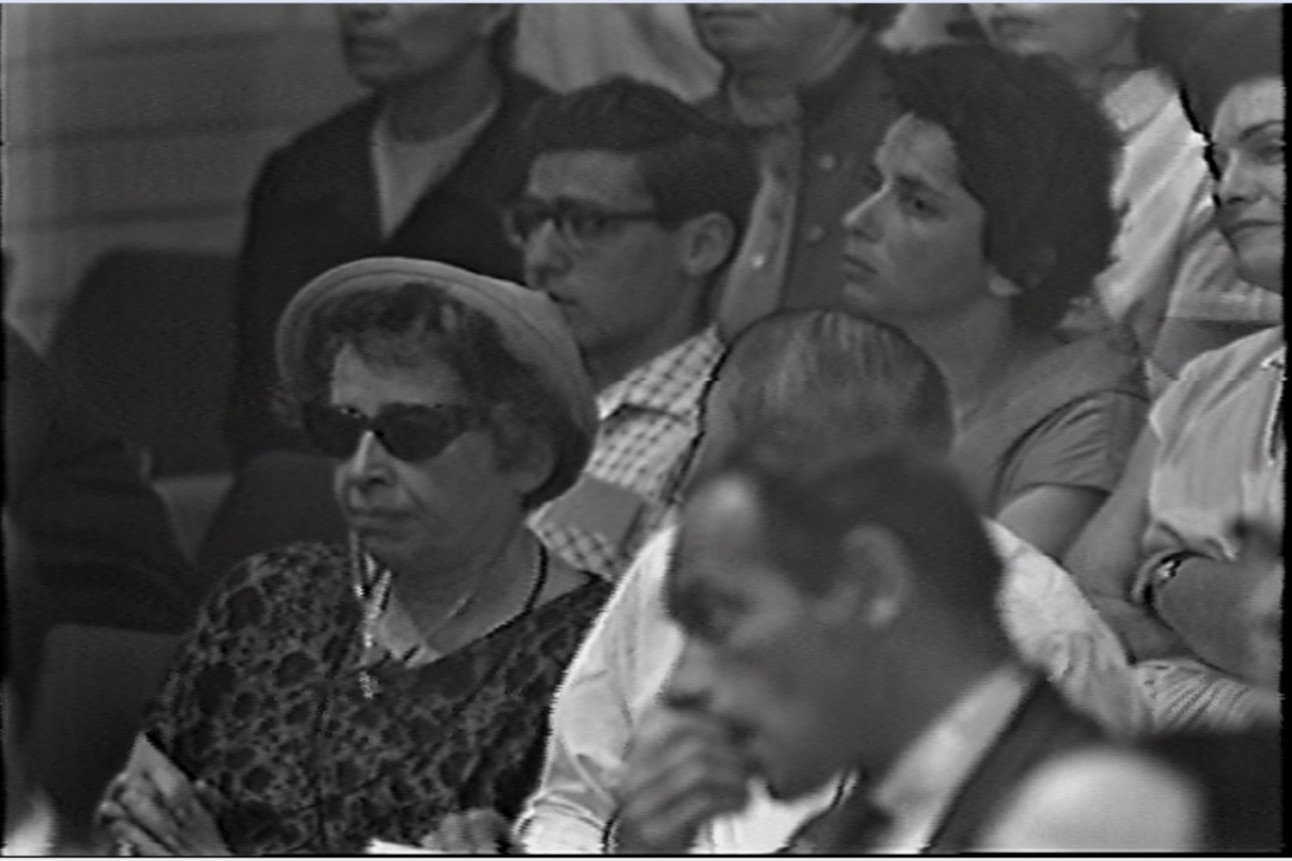
Hannah Arendt at the Eichmann trial in Jerusalem, May 2nd 1961. Photo: Washington D.C., United States Holocaust Memorial Museum, Courtesy of the Steven Spielberg Jewish Film Archives of the Hebrew University of Jerusalem
Arendt’s views that Eichmann acted thoughtlessly and with mere aim of performing a job, of satisfying his superiors, rather than with explicitly evil intent, resulted in mass controversy and debate, particularly within the Jewish community.
She sought to further explore her view of Eichmann as an unthinking, banal manifestation of evil rather than an innately monstrous individual in her posthumously published work The Life of the Mind.
Affairs in the United States impacted Arendt, prompting her to publish articles on the assassination of John F. Kennedy, the civil rights movement, the Vietnam War and student uprisings. Essays on American politics in light of the developments of the 1960s and 1970s are collected in Crises of the Republic.
From 1957-1967, Arendt taught at various American universities. She died in New York in 1975, at the age of 69.
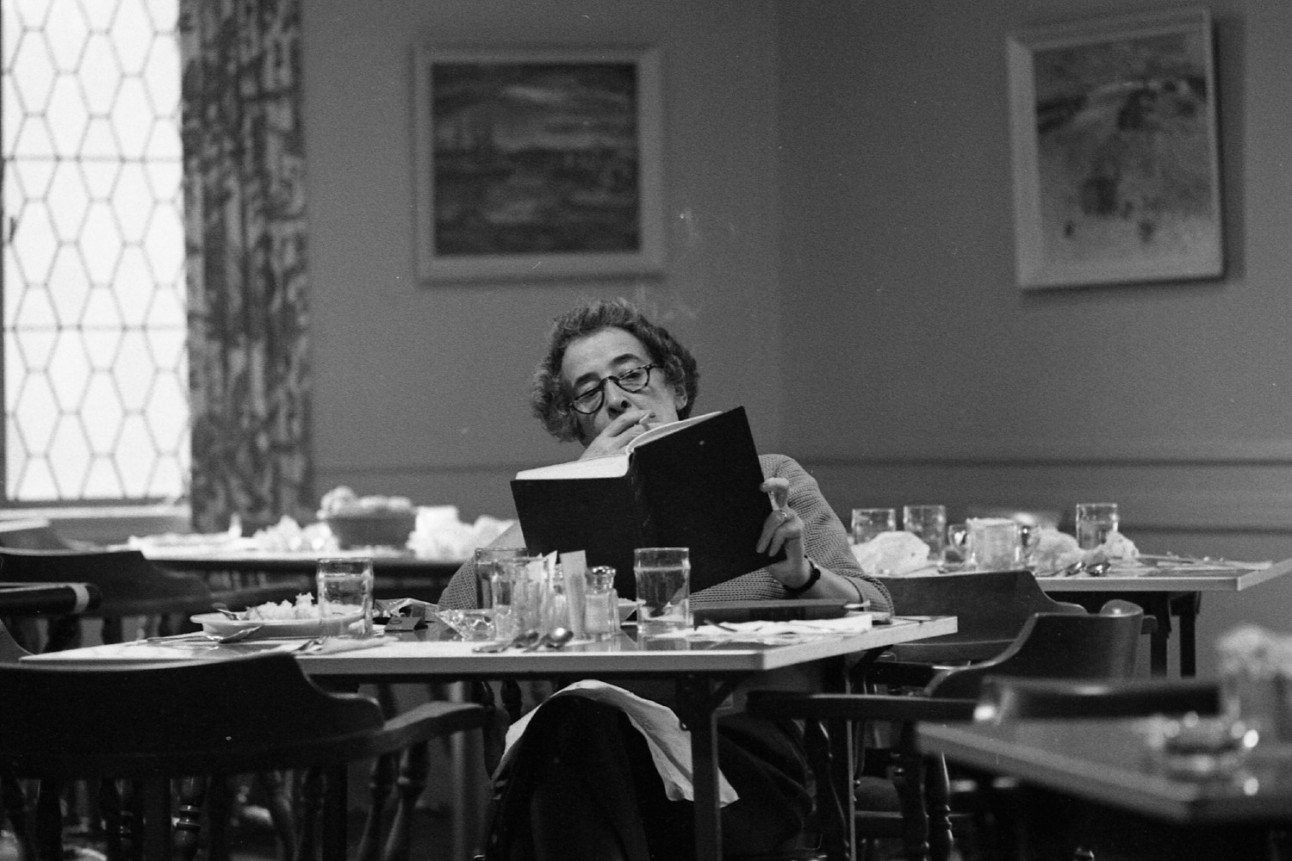
Hannah Arendt at the Wesleyan University. Photo: Middletown, Connecticut, Wesleyan University Library, Special Collections & Archives
Paying tribute to Arendt’s life
“Hannah Arendt and the Twentieth Century" opened on May 11th at Berlin’s Deutsches Historisches Museum, after the coronavirus pandemic saw the exhibition postponed for over six weeks.
The museum is now operating under strict safety guidelines, namely mandatory mask-wearing, a 1.5 metre distance rule and time-specific visiting slots which can be reserved in advance online.
Curated by Dr. Monika Boll, the exhibition spans two floors of the museum’s modern wing. Through video recordings, film interviews and displays, the exhibition tracks in sixteen sections the experiences, encounters and controversies that have come to characterise Arendt’s life and work.
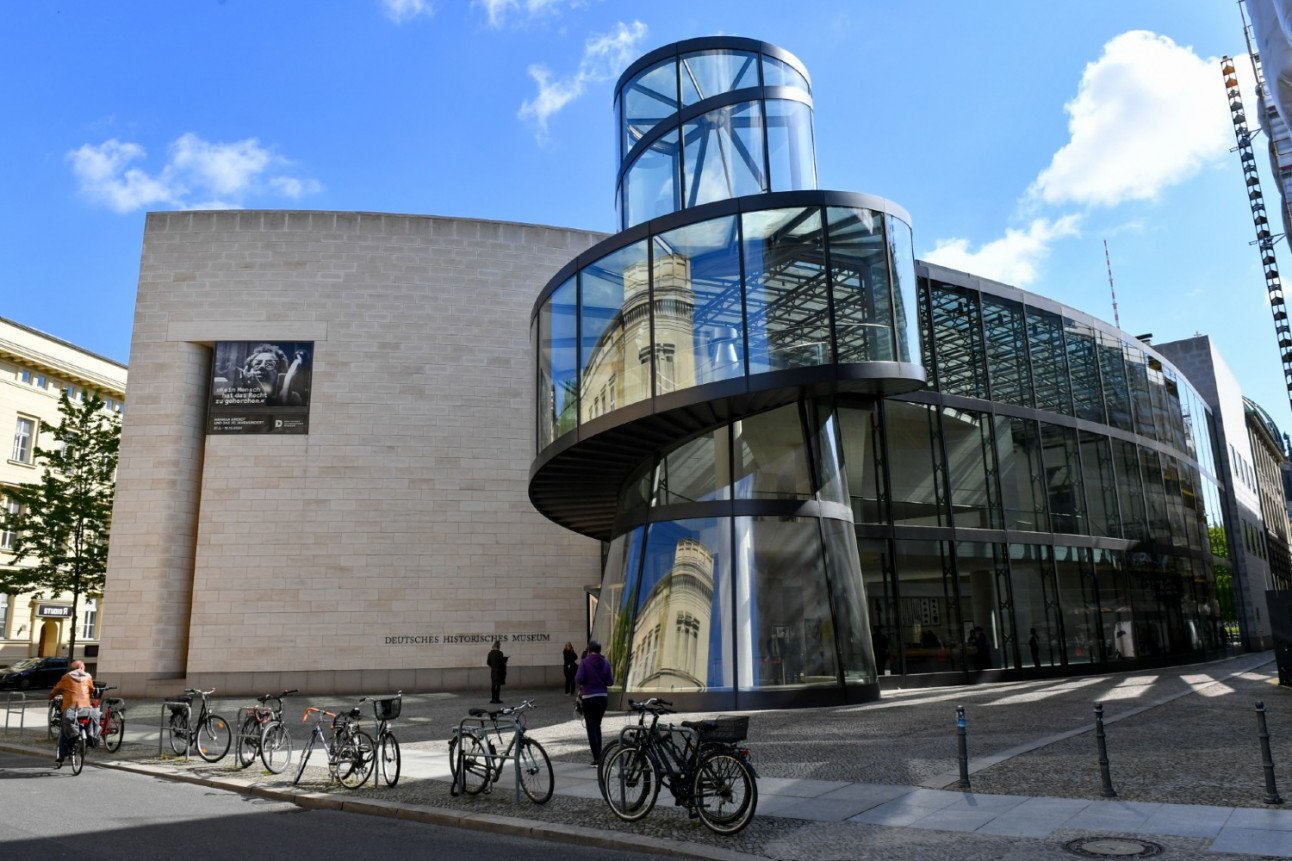
The museum's modern wing. Photo: DPA.
Also highlighted is the continual impact of Arendt’s writing on modern discourse, particularly her thoughts on the status of refugees, shaped by her own experiences of exile.
Around 300 objects from Deutsches Historisches Museum’s collections and institutions such as the Hannah Arendt Bluecher Literary Trust, the Central Zionist Archives in Jerusalem, the German Literature Archive in Marbach and the Hannah Arendt Centre in Oldenburg are included in the exhibition.
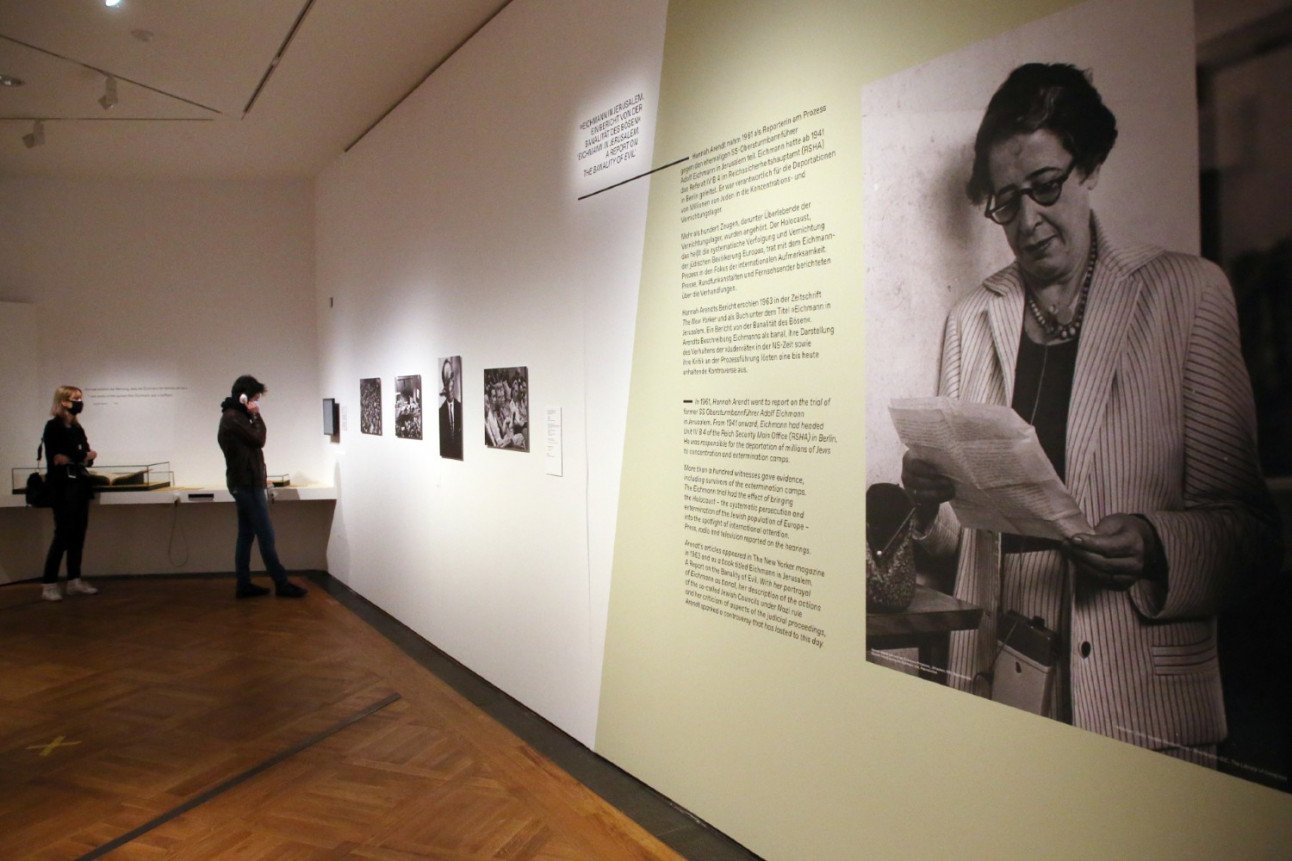
Inside the exhibition. Photo: DPA
A selection of Arendt’s belongings, a series of portraits by photographer Fred Stein and a large number of her own photographs are also on display, revealing a personal side to the political theorist.
Together with the museum, Piper Verlag has published a volume of essays by notable scholars, each shedding light on an aspect of Arendt’s philosophies and their subsequent reception.
Hannah Arendt and the Twentieth Century is showing at the Deutsches Historisches Museum until October 18th, 2020.
Comments
See Also
Hannah Arendt lived an extraordinary life. Forced to flee Germany as a young Jewish woman in World War II, her experiences of exile and life under the Nazi regime led her to pen works which have long shaped political theory and philosophy.
We take a brief look at her life and introduce the Berlin exhibition shining a light on her remarkable influence on the 20th century.
In the beginning
Arendt was born in Hanover in 1906 as the only child to secular German-Jewish parents. She spent her childhood between Königsberg in East Prussia and Berlin. Her father died from syphilis when she was just seven years old.
At the University of Marburg in Hesse, Arendt studied philosophy under Martin Heidegger, with whom she began a brief affair. In 1929, she completed her PhD at the University of Heidelberg, writing her dissertation on the concept of love in St. Augustinian thought, under the supervision of Karl Jaspers.

Hannah Arendt's student ID card, issued by the Ruprecht Karl University of Heidelberg, 1928. Photo: Universitätsarchiv Heidelberg
Shortly afterwards, Arendt married author Gunther Stern. Whilst living with him in Berlin, Arendt began writing a biography on the 18th century German-Jewish writer and socialite Rahel Varnhagen. During this time, she also became affiliated with Zionism. In 1933, whilst conducting research on antisemitic propaganda for the German Zionist Organisation, Arendt was arrested by the Gestapo.
When she was released, Arendt fled to Paris, seeking refuge from Hitler’s totalitarian regime. There, she worked for the organisation Youth Aliyah, helping young Jews to emigrate to Palestine.
Arendt resided in France between 1933 and 1941, where she divorced Stern and met her second husband, Heinrich Blücher. In France, Arendt became associated with a group which she referred to as “the tribe” - a collective of fellow antifacist exiles, including writers Walter Benjamin and Hermann Broch.
The German occupation
In 1940, the German occupation of France led to Arendt’s imprisonment in a detention camp. She and Blücher managed to escape and fled Europe, eventually making it to the United States in 1941. They settled in New York, where Arendt would remain for the rest of her life.
Throughout the 1940s, Arendt contributed to émigré publications such as the newspaper Aufbau and worked for the Jewish Cultural Reconstruction. Towards the end of the war, Arendt began compiling material for the book which would establish her reputation as a political theorist and writer, The Origins of Totalitarianism. The work sparked a long-running and intense debate about the nature of the political system.
The discourse that followed prompted Arendt to pen works such as The Human Condition, Between Past and Future, and On Revolution.
In 1961, Arendt was present at the trial of Nazi criminal Adolf Eichmann, a member of Heinrich Himmler’s SS and an instrumental organiser of the mass genocide of Jews during WWI. Arendt compiled a report of the trial which was published in the New Yorker in 1963, and then as the book, Eichmann in Jerusalem: A Report on the Banality of Evil, in 1964.

Hannah Arendt at the Eichmann trial in Jerusalem, May 2nd 1961. Photo: Washington D.C., United States Holocaust Memorial Museum, Courtesy of the Steven Spielberg Jewish Film Archives of the Hebrew University of Jerusalem
Arendt’s views that Eichmann acted thoughtlessly and with mere aim of performing a job, of satisfying his superiors, rather than with explicitly evil intent, resulted in mass controversy and debate, particularly within the Jewish community.
She sought to further explore her view of Eichmann as an unthinking, banal manifestation of evil rather than an innately monstrous individual in her posthumously published work The Life of the Mind.
Affairs in the United States impacted Arendt, prompting her to publish articles on the assassination of John F. Kennedy, the civil rights movement, the Vietnam War and student uprisings. Essays on American politics in light of the developments of the 1960s and 1970s are collected in Crises of the Republic.
From 1957-1967, Arendt taught at various American universities. She died in New York in 1975, at the age of 69.

Hannah Arendt at the Wesleyan University. Photo: Middletown, Connecticut, Wesleyan University Library, Special Collections & Archives
Paying tribute to Arendt’s life
“Hannah Arendt and the Twentieth Century" opened on May 11th at Berlin’s Deutsches Historisches Museum, after the coronavirus pandemic saw the exhibition postponed for over six weeks.
The museum is now operating under strict safety guidelines, namely mandatory mask-wearing, a 1.5 metre distance rule and time-specific visiting slots which can be reserved in advance online.
Curated by Dr. Monika Boll, the exhibition spans two floors of the museum’s modern wing. Through video recordings, film interviews and displays, the exhibition tracks in sixteen sections the experiences, encounters and controversies that have come to characterise Arendt’s life and work.

The museum's modern wing. Photo: DPA.
Also highlighted is the continual impact of Arendt’s writing on modern discourse, particularly her thoughts on the status of refugees, shaped by her own experiences of exile.
Around 300 objects from Deutsches Historisches Museum’s collections and institutions such as the Hannah Arendt Bluecher Literary Trust, the Central Zionist Archives in Jerusalem, the German Literature Archive in Marbach and the Hannah Arendt Centre in Oldenburg are included in the exhibition.

Inside the exhibition. Photo: DPA
A selection of Arendt’s belongings, a series of portraits by photographer Fred Stein and a large number of her own photographs are also on display, revealing a personal side to the political theorist.
Together with the museum, Piper Verlag has published a volume of essays by notable scholars, each shedding light on an aspect of Arendt’s philosophies and their subsequent reception.
Hannah Arendt and the Twentieth Century is showing at the Deutsches Historisches Museum until October 18th, 2020.
Join the conversation in our comments section below. Share your own views and experience and if you have a question or suggestion for our journalists then email us at [email protected].
Please keep comments civil, constructive and on topic – and make sure to read our terms of use before getting involved.
Please log in here to leave a comment.